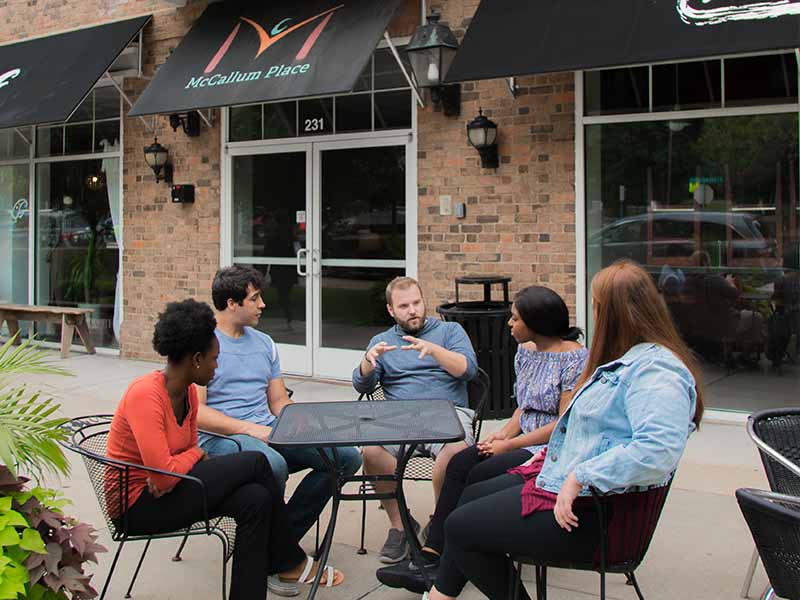Happy Halloween from the McCallum Place Team! We know that this time of year is designed to be spooky for everyone, but it can be especially haunting for those navigating through their personal eating disorder recovery journey. Eating disorder treatment is scary and we are hopeful that this Halloween season is full of more treats than tricks.
As anyone who has struggled with an eating disorder knows, one topic that can be downright terrifying is fear foods. Simply put, a fear food can be any food that a person is afraid to eat, foods that are tangled in a spider web of food rules, rituals, and beliefs. Fear foods can elicit feelings of intense panic and can seem extremely daunting to try to overcome, especially if there are a lot of foods that fall into the very very frightening category.
Complicating things even more is the fact that fear foods are highly unique to each particular person. While there are often trends among what might be considered the toughest foods to face while tackling an eating disorder or disordered eating (think high calorie foods, desserts, fried foods, Halloween candy, etc.), every person has their own personal list. For example, some fear foods are tied to trauma and might not be “typical” to a traditional fear food list. Other much too scary foods are rooted in past or present binge episodes, with many “binge foods” landing on an individual’s not allowed list.
There are many different approaches that clinicians take in helping their clients face their fright and challenge their devilish dishes. One exercise that can be helpful is the creation of a fear food hierarchy. Fear food hierarchies can be completed in a number of ways, but the concept is simple. Make four vertical columns on a sheet of paper. The columns from left to right are labeled “often”, “sometimes, “rarely”, and “never” (or “spooky”, “scary”, “frightening”, and “terrifying”). After the template is created, specific foods are placed in different columns based on how frequently that individual feels comfortable eating them. The first column represents the least feared foods, while the last column is full of foods that evoke the most fear. Identifying foods that foster fear is a great first step in heightening awareness of the extent food avoidance plays in one’s eating disorder.
Once the hierarchy is completed, the client and clinician discuss and process the list that is full of personally identified creepy crawly foods. Next, it’s time to plan out some therapeutic exposures. The thought of this might send a shiver down their spine, but it’s all part of the recovery plan. Typically, start with foods in the “sometimes” category as a jumping off point and progress through the list as indicated. The client and clinician will often eat these foods in session together and talk through thoughts and feelings that surface during the exposure. The whole process isn’t as spooky as it may seem. This is one strategy that can be helpful in diminishing some fear around specific foods, with the goal of completely eliminating as many fear foods as possible.
Sadly there is no magical spell, working toward eliminating fear foods is hard work, BUT so worthwhile. Please don’t let food fill you with fright. Imagine being able to eat all foods without an overwhelming sense of dread and terror. Being able to participate in holiday traditions while eating what actually sounds good, instead of having to stick to a limited list of safe foods. Working on freeing yourself from fear foods is scary, but liberating! So challenge your fear foods, eat the Halloween candy, pet the black cat, and ditch diet culture because it’s just a bunch of hocus pocus.









